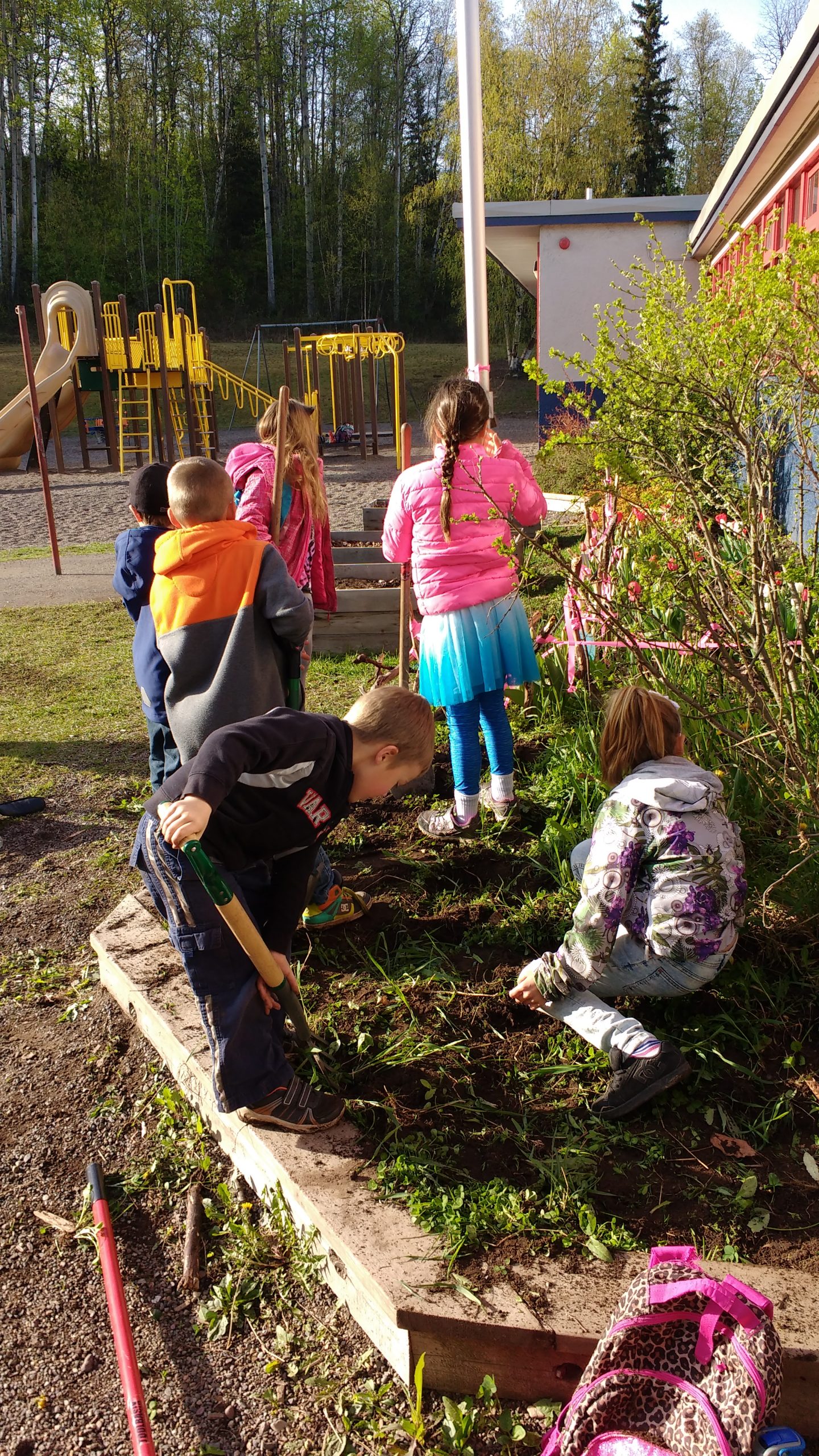Telkwa School’s Farm to School grant was used to start up a fruit leather making project. We are a small school with just over 100 students from mixed rural and town families. We live in a part of the province which has frost from October to May (read that as WINTER for 5 months!)
For us, there is a very small window of time (late May to early September) to be involved with a local farm. There is no commercial farmer who produces fruit for sale. We had planned to go out to local residents and harvest the fruit with the help of the students, but in actuality, the fruit came to us.
We used apples, rhubarb, Saskatoon berries and strawberries which grow very well in the area. Parents and staff donated already picked fruit from this past summer’s abundant crop. Many people in the area try desperately to get rid of their apples before they become an attractant to the local bear population. There is often a struggle between humans and bears as we live in a forested region, so it is a benefit to the community to have a purpose for picking their extra apples.
During the summer of 2015, we purchased our basic start up supplies, including two large industrial sized dehydrators. In the fall, we had a blitz with parent volunteers and the students working to make the fruit sauce. This took several days of coring, chopping, cooking and blending the fruit into puree. It was a challenge to get the fruit processed into sauce in a timely manner. Many of the apples donated were too small to core easily so it was a slow process. Some of the apples had started to spoil after being stored at room temperature as we couldn’t keep up with our donated supply which came all at once.
We have recently purchased a fridge to support the Farm to School project so that we can properly store the fruit next September while waiting to get it all processed. Our recipe was dependent on the sourness of the apples and what donated fruit we received. We used cinnamon for flavour, never sugar. We also did one batch with extra ripe pears that we had left over from the Fruit and Vegetable School Program. Some batches used Saskatoon berries to make it a wonderful colour. We used rhubarb because often people grow plenty, but can’t use it all. It also adds colour and a tangy flavour to the fruit leather.
As we made the fruit sauce, most of it went into the freezer for later thawing, spreading and dehydrating throughout the school year. The dehydrators worked very well, but they could only take about ½ c of puree on each of the 18 mats we have. The drying takes about 8-10 hours depending on the thickness that it is spread. It is easy to peel the fruit leather off the mats. It is then cut and rolled into what looks like fruit rollups, and stored in sealed containers.
The fruit leather is served to all the students in the school as part of our ongoing breakfast program, when a healthy snack is offered to all students to start their day. Students were delighted to be able to eat the fruit leather. The students were enthusiastic about the whole process and surprised how wonderful the fruit leather tasted. We emphasized the “no sugar added” healthiness of it. All the students in the school have had multiple chances to be part of the process at every stage.
We would love to make this project self-sustaining for many years to come by producing the fruit right at the school. We are planning to purchase and plant 6 apple trees from a local nursery. We hired a local landscape architect to help us with what kinds, where and how to plant the apple trees in the school yard. We have planted strawberry plants in the school garden this spring. There is a delay on planting the apple trees until the spring, because the district’s maintenance department will not be able to approve the location for the trees until the fall. The trees will be ordered this fall and won’t arrive until the spring. We are looking forward to this exciting addition to our school grounds which will make it a much more attractive place for the whole community.

